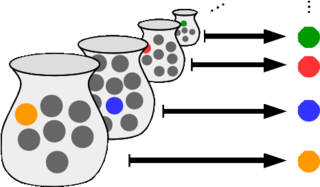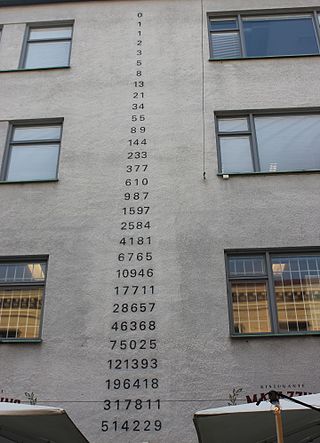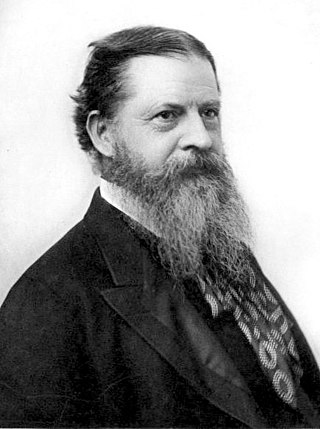Related Research Articles

In mathematics, the axiom of choice, abbreviated AC or AoC, is an axiom of set theory equivalent to the statement that a Cartesian product of a collection of non-empty sets is non-empty. Informally put, the axiom of choice says that given any collection of sets, each containing at least one element, it is possible to construct a new set by choosing one element from each set, even if the collection is infinite. Formally, it states that for every indexed family of nonempty sets, there exists an indexed set such that for every . The axiom of choice was formulated in 1904 by Ernst Zermelo in order to formalize his proof of the well-ordering theorem.
In mathematics, specifically set theory, the continuum hypothesis is a hypothesis about the possible sizes of infinite sets. It states:
"There is no set whose cardinality is strictly between that of the integers and the real numbers."

Set theory is the branch of mathematical logic that studies sets, which can be informally described as collections of objects. Although objects of any kind can be collected into a set, set theory — as a branch of mathematics — is mostly concerned with those that are relevant to mathematics as a whole.

In mathematics, an integer sequence is a sequence of integers.
In the mathematical discipline of set theory, forcing is a technique for proving consistency and independence results. Intuitively, forcing can be thought of as a technique to expand the set theoretical universe to a larger universe by introducing a new "generic" object .
In set theory, Zermelo–Fraenkel set theory, named after mathematicians Ernst Zermelo and Abraham Fraenkel, is an axiomatic system that was proposed in the early twentieth century in order to formulate a theory of sets free of paradoxes such as Russell's paradox. Today, Zermelo–Fraenkel set theory, with the historically controversial axiom of choice (AC) included, is the standard form of axiomatic set theory and as such is the most common foundation of mathematics. Zermelo–Fraenkel set theory with the axiom of choice included is abbreviated ZFC, where C stands for "choice", and ZF refers to the axioms of Zermelo–Fraenkel set theory with the axiom of choice excluded.
In group theory, a branch of abstract algebra, the Whitehead problem is the following question:
Is every abelian group A with Ext1(A, Z) = 0 a free abelian group?
In mathematics, Suslin's problem is a question about totally ordered sets posed by Mikhail Yakovlevich Suslin and published posthumously. It has been shown to be independent of the standard axiomatic system of set theory known as ZFC; Solovay & Tennenbaum (1971) showed that the statement can neither be proven nor disproven from those axioms, assuming ZF is consistent.
In the mathematical field of set theory, a large cardinal property is a certain kind of property of transfinite cardinal numbers. Cardinals with such properties are, as the name suggests, generally very "large". The proposition that such cardinals exist cannot be proved in the most common axiomatization of set theory, namely ZFC, and such propositions can be viewed as ways of measuring how "much", beyond ZFC, one needs to assume to be able to prove certain desired results. In other words, they can be seen, in Dana Scott's phrase, as quantifying the fact "that if you want more you have to assume more".
In mathematics, and particularly in axiomatic set theory, the diamond principle◊ is a combinatorial principle introduced by Ronald Jensen in Jensen (1972) that holds in the constructible universe and that implies the continuum hypothesis. Jensen extracted the diamond principle from his proof that the axiom of constructibility implies the existence of a Suslin tree.
In set theory, a branch of mathematical logic, an inner model for a theory T is a substructure of a model M of a set theory that is both a model for T and contains all the ordinals of M.

Originally, fallibilism is the philosophical principle that propositions can be accepted even though they cannot be conclusively proven or justified, or that neither knowledge nor belief is certain. The term was coined in the late nineteenth century by the American philosopher Charles Sanders Peirce, as a response to foundationalism. Theorists, following Austrian-British philosopher Karl Popper, may also refer to fallibilism as the notion that knowledge might turn out to be false. Furthermore, fallibilism is said to imply corrigibilism, the principle that propositions are open to revision. Fallibilism is often juxtaposed with infallibilism.
In set theory, a branch of mathematics, a reflection principle says that it is possible to find sets that, with respect to any given property, resemble the class of all sets. There are several different forms of the reflection principle depending on exactly what is meant by "resemble". Weak forms of the reflection principle are theorems of ZF set theory due to Montague (1961), while stronger forms can be new and very powerful axioms for set theory.
In set theory, inner model theory is the study of certain models of ZFC or some fragment or strengthening thereof. Ordinarily these models are transitive subsets or subclasses of the von Neumann universe V, or sometimes of a generic extension of V. Inner model theory studies the relationships of these models to determinacy, large cardinals, and descriptive set theory. Despite the name, it is considered more a branch of set theory than of model theory.
In mathematical logic, a formula is said to be absolute to some class of structures, if it has the same truth value in each of the members of that class. One can also speak of absoluteness of a formula between two structures, if it is absolute to some class which contains both of them. Theorems about absoluteness typically establish relationships between the absoluteness of formulas and their syntactic form.
In set theory, Ω-logic is an infinitary logic and deductive system proposed by W. Hugh Woodin as part of an attempt to generalize the theory of determinacy of pointclasses to cover the structure . Just as the axiom of projective determinacy yields a canonical theory of , he sought to find axioms that would give a canonical theory for the larger structure. The theory he developed involves a controversial argument that the continuum hypothesis is false.
In set theory, a branch of mathematics, the minimal model is the minimal standard model of ZFC. The minimal model was introduced by Shepherdson and rediscovered by Cohen (1963).
This is a glossary of terms and definitions related to the topic of set theory.
In order theory and model theory, branches of mathematics, Cantor's isomorphism theorem states that every two countable dense unbounded linear orders are order-isomorphic. For instance, Minkowski's question-mark function produces an isomorphism between the numerical ordering of the rational numbers and the numerical ordering of the dyadic rationals.
References
- Antos, Carolin; Friedman, Sy-David; Honzik, Radek; Ternullo, Claudio (2015), "Multiverse conceptions in set theory", Synthese, 192 (8): 2463–2488, doi:10.1007/s11229-015-0819-9, MR 3400617
- Hamkins, J. D. (2012), "The set-theoretic multiverse", Rev. Symb. Log., 5 (3): 416–449, arXiv: 1108.4223 , Bibcode:2011arXiv1108.4223H, doi:10.1017/S1755020311000359, MR 2970696